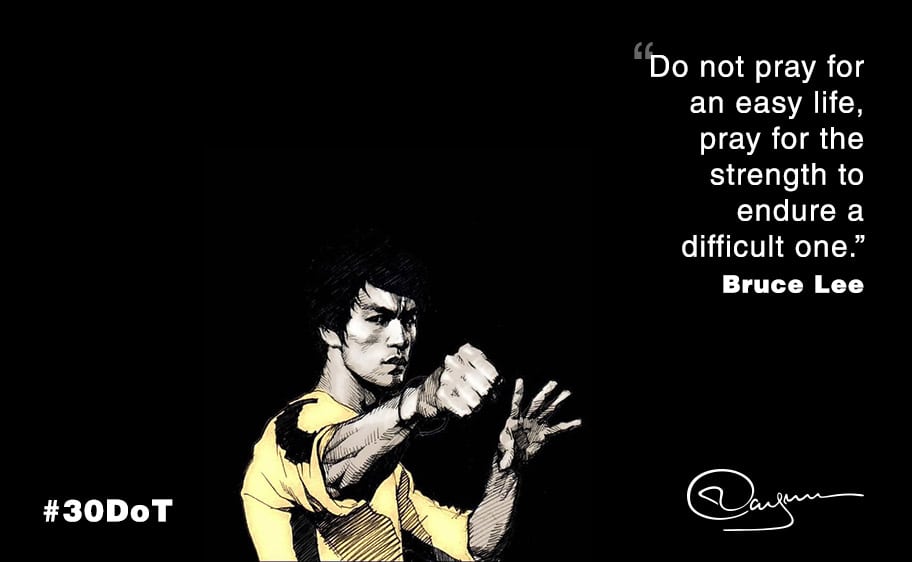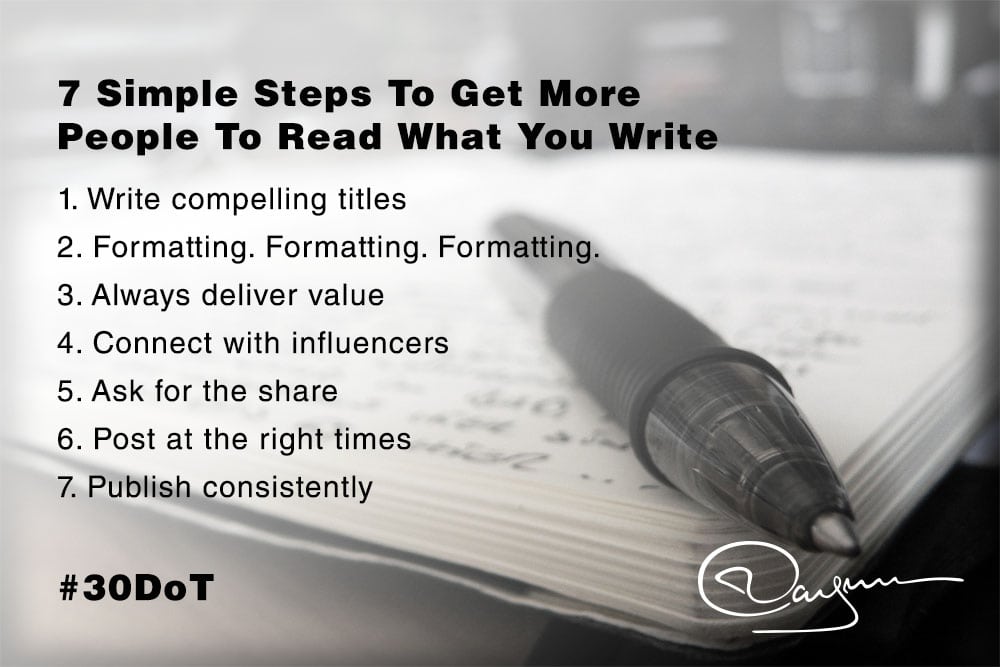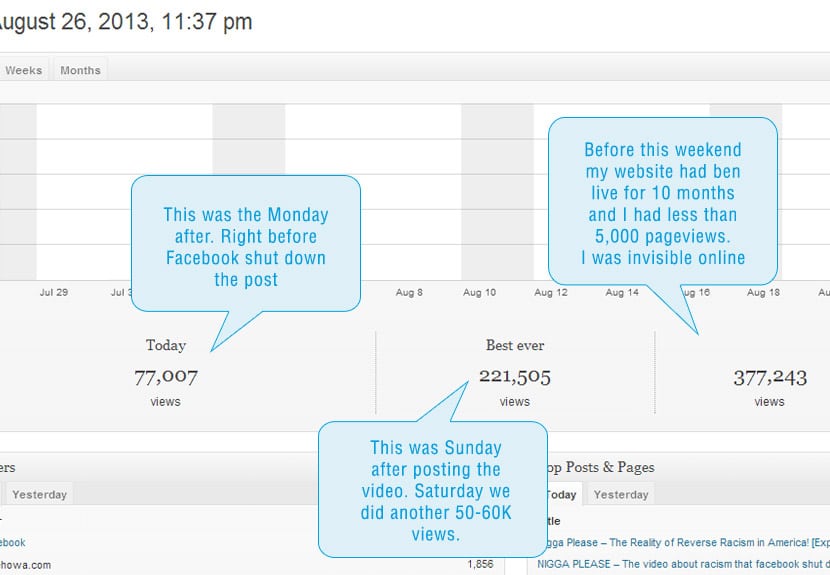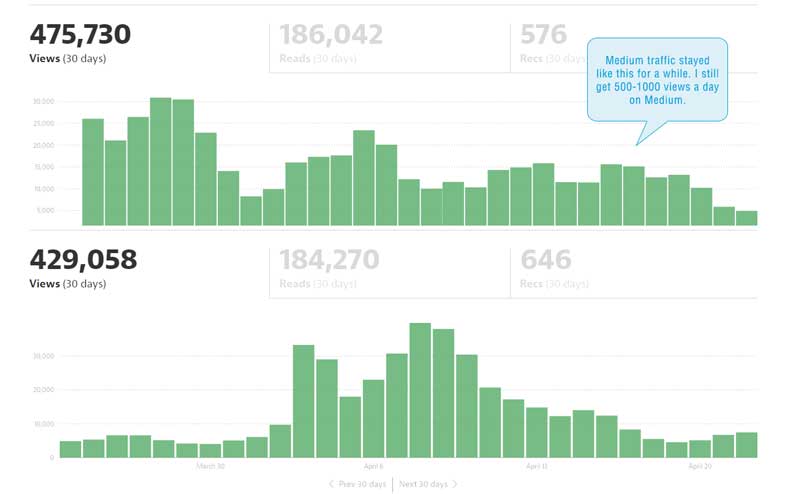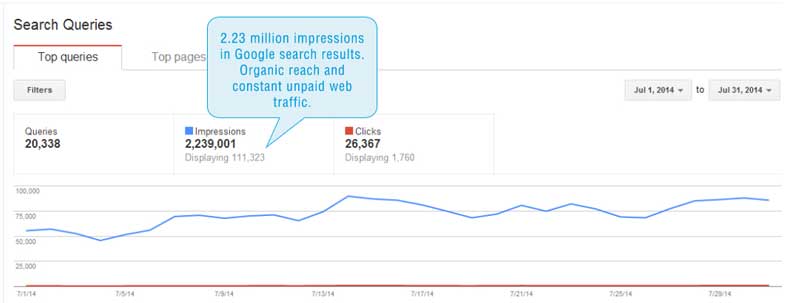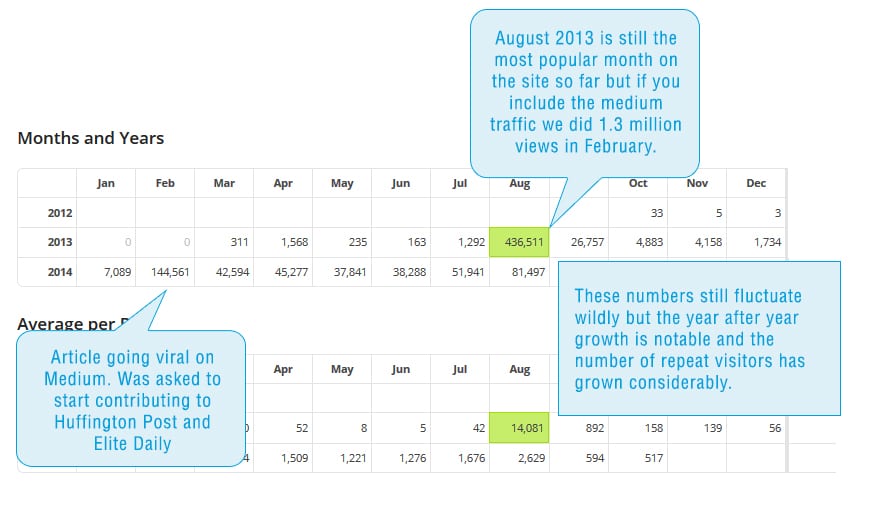Trying to understand Medium’s recent reshuffle and breaking down what I think are 2 major mistakes.
Up until these recent changes, Medium had done a great job of democratizing the creation and consumption of written online content.
Before the changes, Medium was a platform that allowed the content creator to stand solely on the credibility of their contributions. Something I admired and appreciated, especially considering I’m a budding blogger myself.
I loved the thought of a publishing platform where a person’s social standing was not a prerequisite for success. I was instantly addicted to the simplicity of the platform. I honestly saw it as a great “medium” by which to build my online influence and stand out online.
Medium’s publishing platform provided a solution that so many online authors are desperately seeking. In a world flooded with crappy online content, it was a place where words were king; a place where the sway of social swagger was secondary to actual substance.
Medium was a bloggers-blog! A place where content was curated and sorted in collections of categories as well as segmented by the individual creator. A duality of content categorization that is not presented in any other new-media model.
Medium was not just another stepson social network, wanna-be. This was the real deal. They had taken the best parts about blogging (the stories) and made them the centerpiece of their business model.
They stripped down all of the unnecessary elements, made it easy to use and then, they made it beautiful. On every device. No ads. No crap. Just content. Great content at that. It was on its way to becoming the holy grail of internet existence.
They were getting it all, so very, right…
But then they went and changed everything
They changed the way people contribute to collections and reconsidered the way collections work as a whole. They must have thought that their new solution would be better than before but this is where I think they made their first major mistake.
In my eyes, and the eyes of many others, these recent changes are a dramatic deviation from everything that made Medium so great in the first place.
I know no one asked me, and Medium is a free platform, so what right do I have to openly criticize it, but hey, I thought they needed to know that many of us, think they messed up. Even though I do still think they got most of it right.
You can read Medium’s explanation for making the changes here but I wasn’t sold. That being said, here are the two biggest mistakes and why they could have a big impact on Medium’s future as a publishing platform.
Mistake #1
Removing the ability for articles to be included inside of multiple collections
Medium presented a unique value proposition to consumers of content as well as the creators. They provided something that was not available on any other social platform before it.
Readers could come and collect their favorite articles and present them in the form of a curated collection.
Other readers could then follow a collection based on its particular topic of interest or philosophy. Additionally, authors would submit their work to the collection’s curator for approval.
In my eyes, the ability to have an article in multiple collections was essential to Mediums ability to entice people to participate, not only as content creators but as curators of the individual collections.
Their model not only drew in the best writers online, but it also drew in the best readers along the way.
It allowed people who wanted to moderate a collection the ability to do so without necessarily having to write in it regularly. It also allowed writers to shop their words to different collections based on the relevancy of each article and the focus of any particular collection.
Some people just want to write & some people just want to read. Pretty simple really.
Limiting the ability for an article to appear in multiple collections is like telling a blogger that they cannot syndicate a post or contribute their content to another website.
It is a selfish social mechanism of content control that hurts the authors ability to share their work. It also limits the readers ability to consume the content from a source other than the author themselves or an affiliated collection.
Think about it like this.
What if Facebook said you could not share an interesting post. What if instead they told you that the only place you could go to see that particular post was on the person’s profile page or on whatever business page they originally made the post. Odds are that people wouldn’t find your post, not as often at least, because it is only available in one location online.
Why wouldn’t you want the article to appear in multiple collections (think feed here)? Medium is essentially limiting the social sharability of each post by restricting where it will appear for users that are not already associated or connected to that post author or collection.
It’s either that, or collection owners now have to actively collect authors and somehow entice them to contribute to their collection.
Either way, it adds a hurdle to the submission process and removes part of the original social structure that made Medium so unique.
The new system might be working, but personally, I know I have been publishing my articles inside of my own collection. I even took my most popular posts away from other collections when I found out about these changes. I wanted to make sure that my top performing posts were pointing traffic back to my own collection. Something I am sure many others have done since the changes went live.
It used to be, that after I finished an article, I would go submit it to relevant collections. I would submit my article for review and the collection curator would either approve or reject it. It was a logical process and forced the author to seek out relevant audiences for their newly created content while not placing the requirement of being a regular contributor or even being connected as an author to that collection.
It allowed for a diversity of content inside of each collection that became a big part of what made Medium cool, or so I thought.
Don’t get me wrong, I like the thought of having multiple authors inside of a single collection, and the collaborative features that they have added are great, but why not let people submit either articles or themselves from the front end of each collection?
Read more about the submission process in Mistake #2 below
With these recent changes, Medium expects new authors to reach out and find a place inside of an existing collection in order to contribute any content to it.
It turned a system that was beautifully democratic and turned it into a system of clique based collections that are closed off to the average creator. It’s like content communism.
I can understand their desire to experiment with the social structure of their new online audience, but some of that social exploration was already happening organically. There was already a neat dynamic forming between the creators and curators and that dynamic social element was just plucked from the entire equation.
The question then becomes, “What long term effect does the removal of that social variable become to the progress of Medium as a whole?”
The new search for social collaboration is definitely something that an avid writer might set out to master but what about the average user?
What is a new user going to do when they find out that the only place they can publish on arrival is inside of a new collection? One that they must also build a readership for on their own. A problem they are probably already facing on their personal website.
At least if you (the author) build an audience on your website, you become the sole beneficiary of the audience you create. With the shift in recent strategy, Medium actually undercut the value they were providing you as the individual creator. Again, their product, their prerogative, but I really think they gave up on a huge value proposition here.
The ability to easily have your content shared among many different collections, was a huge differentiator from other blogging platforms. It is hard to think that such a large differentiator could be removed from the equation and not have some form of noticeable effect on their overall user base, sign ups, user activity and more.
I do not have any inside sources at Medium, but I have to wonder whether these changes will ultimately be revealed to revolve around some sort of monetization strategy.
There is, I am sure, some greater plan to turn this thing into a product, and I have to imagine that the guys who are pulling the strings know what they are doing. I just couldn’t help but ask some of these questions out loud and I am sure that other Medium users are wondering the same things.
I know that for me, part of the appeal when I first came to Medium was the way that collections worked. They were like mini magazines. Edited and curated by individuals who often happened to be great authors.
I think Medium might have underestimated the importance of the balance of power they created between the content creators and content consumers.
Which brings me to another question I’d like to ask the management team at Medium…
Why would you want content authors to curate their own collections? Why abandon such a unique social structure where authors had to compete at a certain level for relevancy inside of popular collections? Why remove the ability for curators to manage collections of other peoples work if that all they wanted to do?
By removing this feature, Medium minimized the role of the content consumer, potentially alienating a large portion of the people (readers), who attracted all the great writers in the first place.
I have to believe that many other people were fans of the original collections and how they worked because they were just that. Collections of great content. Submitted and screened as each individual saw fit. Every bit as much a creative expression of the individual who was curating the collection as it was the contributors inside of it.
Whether done with that as an understanding or not, that level of social interaction has been removed as a function of the Medium platform. A move that pushes Medium more towards mediocrity in my eyes.
If an authors only chance at getting published in a popular collection is to connect with the other authors of that particular collection, then new authors are immediately put at a distinct disadvantage over established authors on Medium. Something that is counterproductive to what Medium did by democratizing the content model in the first place.
It allows the authors who got in early and are part of established collections to gain credibility, while making it ever more difficult for new authors to do the same.
In the long run, I think this means that many new authors will end up starting their own collections and self publishing their work in those collections and then abandoning them over time as it becomes difficult to find collections in which to contribute and find readers.
We will watch Medium devolve from a platform where high-level, quality content, was a requisite for distribution inside of any collection, to a place where the established collections control the conversation and the majority of contributors will once again be left on the outside looking in.
If you ask me, (and I know no one did) this move creates a redundancy in the Medium article submission system (specifically by forcing new authors to publish in their own collections as a default) and by removing the incentive (by making it difficult and unintuitive) for anyone other than established authors, and people who got in during the early days, to see any real results from the platform.
Mistake #2
Removing the ability to submit a story to a collection in which you are not already an author
Another one of Medium’s value propositions, especially early on, was the social structure that began to form between the different creators and the curated collections.
Their efforts to democratize content was effective in the sense that it allowed everyone to become an independent arm in their own media machine.
And it was simple. Write awesome words, search for relevant collections and submit the article for consideration.
If you wanted to control a collection then you could, but if you just wanted to write then you could do that too.
Individual collections were just that. Collections of work that the individual curator found interesting. Things that they wanted to share with their growing community of content consumers.
Medium allowed people to separate themselves not only by weaving words into popular posts, but by collecting the words they consumed for themselves into sharable collections.
Medium was as much a social platform for readers as it was for writers and I think they lost sight of that with some of these changes.
Each collection was a representation of the individual who was collecting its content. Each with a persona in and of itself. One that should have remained independent of their persona as an author.
The curator could choose to publish their own contributions inside of their collection or not. The author was not forced to have the content in one place and the reader was able to find the best stories in the collections that made sense.
If Medium is intending to become the arbiter of all its content, then I guess these changes would make more sense to me. Since they claim to be all about the story, you think they’d have kept it as easy as possible for people to find the stories they want. Logically this would be more likely with as many curators as possible.
All the authors care about is getting people to read their words, so you can see how these changes upset might have upset a delicate balance of power that was present early in Medium’s development.
I for one liked having to submit my work to individual collections. I liked having that real world buffer of relevance before someone actually read what I wrote.
As much as I appreciate the emails that Medium sends out on my behalf, it is not a service that I am unable to easily do on my own. Actually, it is something I do on my own. I do it because I like to build value in that subscriber list and because I get to build relationships with my readers. It’s pretty simple, I build a subscription base and in turn, I own those relationships.
In Medium’s new model, I become a collector of actionable data for them as opposed to myself. Sure the simplicity of their subscriber system is great, but what is the actual value of them managing my subscribers in the way that they have.
The first thought that comes to my mind is a monetization model that will eventually charge power-users for access to the audience they create on Medium. Much like Facebook has done recently with their pages and advertising model, medium could make it so that the audience you worked so hard to build is now out of your reach unless you pay them what they ask. Good for them, not for you.
So what is next?
It is still early in the development game for Medium, as a social tool as well as a publishing platform. None of these changes are final or cast in stone, but their potential negative impact cannot be ignored.
I am sure this is not the last change we will see and I look forward to watching their progress along the way.
I guess they’ll either get it right or they won’t. As information becomes the currency of the future, the battle to control as much of that information exchange as possible will rage on. And by that measure, Medium is still quite powerful and well positioned to do something big.
I have to end this article by saying again, that I do appreciate what Medium has done up to this point, even considering these recent changes.
All I can do at this point is wait, and watch.
Oh, and write, but not submit, articles to any collection other than my own.
 Content, content, content…
Content, content, content…

